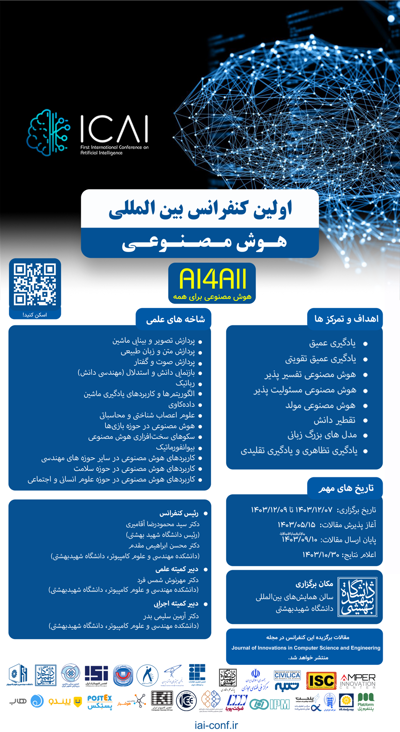0% Complete

نویسندگان :
کلمات کلیدی :
چکیده :
لیست مقالات بایگانی شده
محمد هادی امینی - خدیجه نعمتی - صفورا عاشوری
Fatemeh Ghazali - Touraj BaniRostam - MirMohsen Pedram
Rahim Mohebbi Gargari - Ali Shalbafan - Seyed Jalil Alavi - Maryam Amirmazlaghni - Seyed Hamzeh Sadatnejad - Heiko Thoemen
Ahmad Nasrollahpour - Mohammad Khanabadi Borchalouei - Toktam Khatibi
Morteza Nalbandi - Athena Abdi
Seyyed Ali Zendehbad - Abdollah PourMottaghi - Marzieh Allami Sanjani
Masoud Kaviani - Ahmadreza Samimi - Arman Gharehbaghi - Alireza Jahanbakhsh
Reyhane Salehbeigi - Noushin Riahi
Mohammad Amin Lotfi - Kimiya ٍEghbal - Fateneh Zareayan Jahromy

